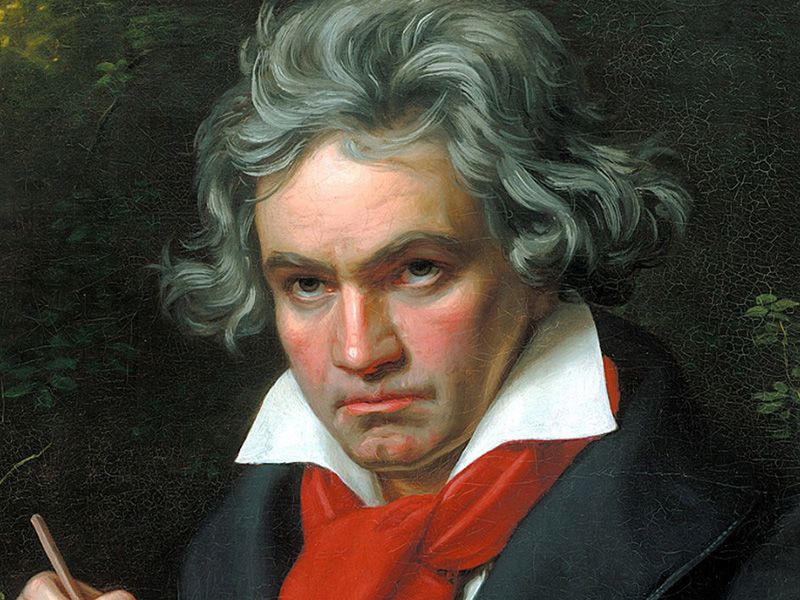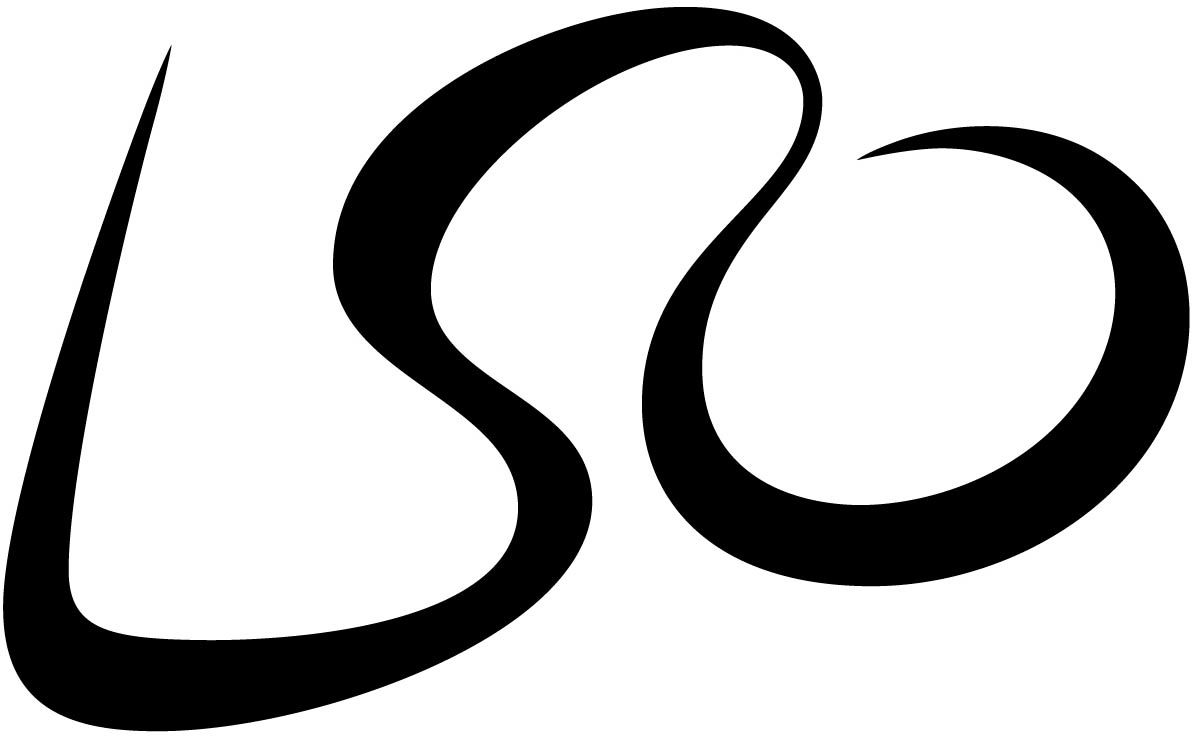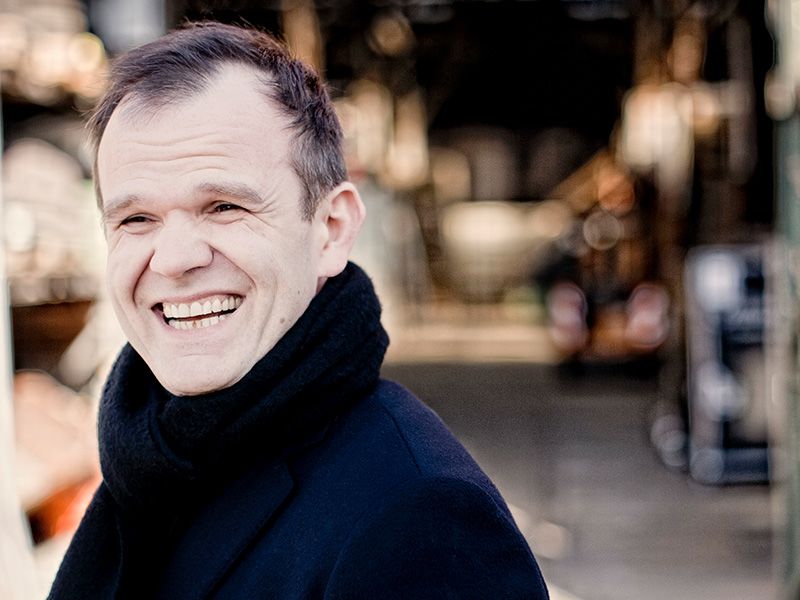LSO Half Six Fix
Beethoven 3
Wednesday 10 November 2021 6.30pm
Digital Concert Guide

Welcome to tonight's Half Six Fix, a different way to experience the London Symphony Orchestra, with introductions from Principal Guest Conductor, François-Xavier Roth and Clare Duckworth, LSO Sub-Principal First Violin.
YOUR DIGITAL CONCERT GUIDE
You can use your phone to view this digital guide during the concert, and discover more about the music and performers.
Navigate using the menu icon (≡) at the top of the screen.

There is free WiFi in the Concert Hall, available through the Barbican Free WiFi network.
So that everyone can have the best experience, please set your phone to silent and don’t use other apps during the music. Photos can be taken during applause at the end of the concert.
Structure your listening with the Visual Listening Guide
The Guide is designed to act as a map of important sonic landmarks in the Symphony, showing where the main musical themes and moments occur in a visually engaging way, whatever your musical background!
NB The licence to the Visual Listening Guide has now expired, but is available to purchase from the Symphony Graphique website.
Opens in a new tab
Tonight's Programme
Ludwig van Beethoven Symphony No 3, 'Eroica'
François-Xavier Roth conductor & presenter
Clare Duckworth presenter & LSO Sub-Principal First Violin
London Symphony Orchestra

‘Music is capable of reproducing, in its real form, the pain that tears the soul and the smile that it inebriates.’

Symphony No 3 in E-flat major Op 55, 'Eroica'
✒️1803 | ⏰50 minutes
1 Allegro con brio
2 Funeral March: Adagio assai
3 Scherzo: Allegro vivace
4 Finale: Allegro molto – Poco andante – Presto

BAM! … BAM! With those two chords – a pair of stabbing orchestral thunderbolts – Beethoven opened his ‘Eroica’ Symphony, and at the same time began redefining what a symphony could be. Not only was his Third Symphony almost twice as long as any previous symphony written by the great Mozart or Haydn, and not only did it expand the scope of the orchestra (with three horns rather than the standard two) – but this was one of the earliest concept symphonies: an attempt to load the rule-based, logic-driven, abstract symphonic framework with a narrative or descriptive element.
This was originally to be a symphony in honour of Napoleon, a figure who, as guardian of the French Revolution’s core ideals – liberté, fraternité, egalité – Beethoven greatly admired. The composer named the work ‘Bonaparte’ but later, on hearing that Napoleon had appointed himself Emperor, Beethoven famously scratched out the dedication on his manuscript score. He declared the new leader was a mere human after all, and that ‘he too will trample on all human rights and indulge only his ambition’. The published title instead became Sinfonia eroica (Heroic Symphony).

The sense of heroism is visceral in the first movement, but there is struggle too, an impression of battling to create order out of chaos. It has been suggested that this movement represents the hero’s life, but it is hard not to also hear it as a reflection of Beethoven’s own personal struggles at the time. Only the previous year (1802), Beethoven – profoundly deaf and chronically aware of his social isolation – penned a letter, known as the Heiligenstadt Testament, expressing his grief and revealing contemplations of suicide.
With its sombre, deliberate tread and its ta-ta-ta tah drumbeat rhythm, the second movement is a funeral march. There’s a brief ray of light in a sunnier pastoral section but another episode brings a solemn, almost asphyxiating ‘double fugue’ section (where two themes, heard simultaneously, are repeated or answered in close succession).
The Scherzo third movement comes as welcome relief, beginning in hushed anticipation before a brief full-orchestral outburst. Beethoven throws in some characteristic accented off-beats as mis-steps. The middle section is where the players of the newly expanded horn section come into their own.
The finale opens with an attention-grabbing flourish, and then strings pluck out a cheeky, bare theme. It’s only after this theme is heard again in two variations (slightly transformed repetitions) that, on the third time through, we hear an oboe tune above it, revealing that the ‘theme’ was in fact just a bass line. As well as this playful ingenuity, Beethoven references a range of musical forms and devices, along the way alighting on a pompous march and a poignant version of the earlier oboe tune, now spotlighting five wind players. But there is grandeur and exuberance too, and the symphony’s end could hardly be more conclusive and affirmative.

Ludwig van Beethoven
1770 (Germany) to 1827 (Austria)

In his early twenties Ludwig van Beethoven left his native Bonn for Vienna, where he became established as a composer, piano virtuoso and improviser of great ability. Largely following the Classical models of Haydn and Mozart in his ‘early’ period, he recognised signs of his impending deafness as early as 1796.
In 1802, he set out his suffering and alienation, his thoughts of suicide and his creative resolve in his Heiligenstadt Testament. His ‘middle’ period was characterised by a broadening of form and an extension of harmony to suit his proto-Romantic expression, spawning the Symphonies Nos 2 to 8, notable piano sonatas, several string quartets and his only opera, Fidelio.
He produced less music in his ‘late’ period (from 1813) but his last years saw his mould-breaking ‘Choral’ Symphony (No 9) and an exploration of increasing profundity in the more intimate mediums of the string quartet and piano sonata.

Beethoven on his Deafness
‘For me there can be no relaxation with my fellow men, no refined conversations, no mutual exchange of ideas. I must live almost alone, like one who has been banished … I would have ended my life – it was only my art that held me back.’
François-Xavier Roth on Beethoven
‘The strongest influence on how I conduct Beethoven today is actually contemporary music: it’s my contact with the composers of our time which makes me reconsider things and ask myself much more interesting questions than I perhaps did 10 or 20 years ago.
Even if you’re conducting music by a composer who’s been dead for 300 years, I think you can still get into a certain mindset, as if he’s right there with you in the rehearsal room making suggestions!’

First Impressions
Unsurprisingly, some listeners at the premiere of Beethoven’s ‘Eroica’ Symphony in Vienna in 1805 were challenged by the work’s huge scale.
One reviewer wrote:
‘[There is] too much that is harsh and bizarre, which hinders greatly one’s grasp of the whole, and a sense of unity is completely lost’
There’s also a report that someone cried:
‘I’ll give another kreuzer if the thing will just stop!’
Napoleon on Music
Had Beethoven kept the original title ‘Bonaparte’ for his Third Symphony, the music-loving Emperor is likely to have felt honoured. In 1794, he wrote to his then fiancée Désirée Clary:
‘Music is the soul of love, the sweetness of life, the consolation for sorrow and the companion of innocence.’

More is More
Running to around 50 minutes, Beethoven's 'Eroica' was the longest symphony of its time! Here are five more symphonies for the time-rich listener:
Havergal Brian Symphony No 1, ‘Gothic’
✒️ 1919–27 | ⏰1 hour 54 minutes
Mahler Symphony No 3
✒️ 1893–96, rev 1906 | ⏰1 hour 40 minutes
Mahler Symphony No 2
✒️ 1888–94, rev 1903 | ⏰1 hour 25 minutes
Bruckner Symphony No 8
✒️1884–87 | ⏰1 hour 30 minutes
Vaughan Williams A Sea Symphony (No 1)
✒️1903–09, rev 1923 | ⏰1 hour 4 minutes
Tonight's Artists

François-Xavier Roth
LSO Principal Guest Conductor
François-Xavier Roth is one of today’s most imaginative conductors and programmers, whether in his roles as General Music Director of the City of Cologne and founder of Les Siècles, or elsewhere. He is a charismatic and persuasive advocate for classical music of every description. Engagement with new audiences is an essential part of Roth’s work.
In Cologne, where he has directed both the Gürzenich Orchestra and the Opera since 2015, his programming is notable for its breadth and depth. In 2021/22, he will lead new productions of Berlioz’s Béatrice et Bénédict and Humperdinck’s Hansel and Gretel, and a new semi-staging of Zimmerman’s Die Soldaten with Calixto Bieito.
His sense of musical exploration led him in 2003 to found Les Siècles, which performs contrasting programmes on modern and period instruments, often within the same concert. Together they have toured Europe, China and Japan, appearing at the Berlin Musikfest, BBC Proms and Enescu festivals.
Roth is a champion of new music and has premiered works by Hèctor
Parra and Georg-Friedrich Haas, and collaborated with composers including Pierre Boulez, Helmut Lachenmann, Philippe Manoury, Wolfgang Rihm and Jörg Widmann. He has a leading role in the LSO Panufnik Composers Scheme, mentoring early-career composers.
In 2020 he was awarded the German Record Critics’ Honorary Prize, the youngest conductor ever to receive it. For his achievements as musician, conductor, music director and teacher, Roth was created a Chevalier of the Légion d’honneur.
London Symphony Orchestra
At the London Symphony Orchestra we strive to inspire hearts and minds through world-leading music-making. We were established in 1904, as one of the first orchestras shaped by its musicians.
Through inspiring music, a world-leading learning and community programme and technological innovations, our reach extends far beyond the concert hall.
On Stage
Leader
Roman Simovic
First Violins
Clare Duckworth
Ginette Decuyper
Laura Dixon
Maxine Kwok
William Melvin
Claire Parfitt
Elizabeth Pigram
Laurent Quénelle
Harriet Rayfield
Sylvain Vasseur
Second Violins
David Alberman
Thomas Norris
Sarah Quinn
Miya Väisänen
Matthew Gardner
Naoko Keatley
Alix Lagasse
Csilla Pogany
Belinda McFarlane
Iwona Muszynska
Andrew Pollock
Paul Robson
Violas
Edward Vanderspar
Gillianne Haddow
Malcolm Johnston
Thomas Beer
Anna Bastow
Germán Clavijo
Stephen Doman
Sofia Silva Sousa
Robert Turner
Cellos
Rebecca Gilliver
Alastair Blayden
Jennifer Brown
Noël Bradshaw
Eve-Marie Caravassilis
Daniel Gardner
Laure Le Dantec
Amanda Truelove
Double Basses
Colin Paris
Patrick Laurence
Matthew Gibson
Thomas Goodman
Joe Melvin
José Moreira
Flutes
Gareth Davies
Imogen Royce
Oboes
Olivier Stankiewicz
Rosie Jenkins
Clarinets
Vitor Fernandes
Chi-Yu Mo
Bassoons
Daniel Jemison
Joost Bosdijk
Horns
Timothy Jones
Angela Barnes
Daniel Curzon
Jake Parker
Trumpets
Paul Beniston
Adam Wright
Timpani
Nigel Thomas





